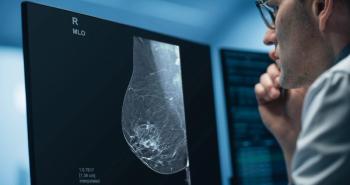
Digital mammography research adds contrast subtraction
Digital mammography provides a springboard from which new imaging techniques are developed to address current limitations in the detection and diagnosis of breast cancer."The presence of the increased quantitative quality of the data acquired in these
Digital mammography provides a springboard from which new imaging techniques are developed to address current limitations in the detection and diagnosis of breast cancer.
"The presence of the increased quantitative quality of the data acquired in these images, as well as the presence of the image in digital form, facilitates new applications," said Martin J. Yaffe, Ph.D., senior imaging scientist at Sunnybrook and Women's Health Science Centre in Toronto.
The state of several new technologies was described at a SCAR University class on Thursday. One of the most promising is contrast subtraction, a process similar to breast MR, in which a contrast agent is injected into the vascular system to detect tumor angiogenesis.
"Digital mammography can obtain similar results using iodine contrast media," Yaffe said.
First, a conventional mask image is produced with only light compression to prevent blood flow constriction. Nonionic contrast is then injected, followed by additional low-dose digital imaging every two minutes for eight minutes. The process yields pre- and postinjection studies that differ only in the presence of iodine.
When a logarithmic transform is applied to both the mask and the contrast image and they are subtracted, all soft-tissue structures common to the two images disappear, leaving only the image of the iodine.
"Because we are interested in seeing the iodine rather than the soft tissue, we can abandon the cardinal rule of using very low dose x-ray energies and instead use a higher energy beam," Yaffe said.
In fact, one can use as high a kV as can be obtained on the digital mammography unit, he said.
The contrast-subtracted images show the morphology of the location of angiogenesis. The potential uses of this technique are similar to breast MR, Yaffe said
"If similar performance is obtained - and this has not been determined - the lower cost and possibly improved accessibility and reduced examination time would all be assets," he said.
The ability to improve sensitivity and better demonstrate the extent of disease compared with conventional mammography is worth investigating, as is this technique's possible role in assessing response to antiangiogenic therapy or neoadjuvant chemotherapies, Yaffe said.
Newsletter
Stay at the forefront of radiology with the Diagnostic Imaging newsletter, delivering the latest news, clinical insights, and imaging advancements for today’s radiologists.




























